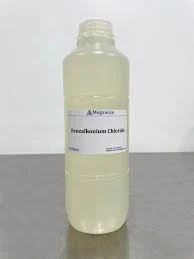polyaluminum chloride msds
Understanding Poly Aluminum Chloride (PAC) and Its Safety Data
Poly Aluminum Chloride (PAC) is a widely used chemical compound in water treatment processes. It is a coagulant that effectively stabilizes and removes suspended particles, making it essential in various applications including drinking water purification, wastewater treatment, and paper manufacturing. While PAC is an effective treatment agent, understanding its Material Safety Data Sheet (MSDS) is crucial for ensuring safe handling and usage. This article provides an overview of PAC, its applications, and the important safety information highlighted in its MSDS.
What is Poly Aluminum Chloride?
Poly Aluminum Chloride, often referred to as PAC, is a polymeric coagulant consisting of aluminum and chlorine. It typically appears as a pale yellow to white solid or a clear to slightly yellow liquid. PAC is formed by the polymerization of aluminum chloride and is characterized by its high charge density, which enhances its coagulation properties.
PAC is widely favored over traditional coagulants like aluminum sulfate due to its effectiveness at lower doses, its ability to operate over a wide range of pH levels, and the reduced sludge production during treatment processes. This makes PAC a cost-effective and efficient solution for water treatment facilities.
Applications of PAC
1. Water Treatment PAC is primarily used in drinking water purification to remove turbidity, color, and harmful microorganisms. Its high charge density promotes rapid floc formation, leading to effective sedimentation.
2. Wastewater Treatment In wastewater facilities, PAC aids in the clarification process by binding to impurities and facilitating their removal. This process not only improves the quality of effluent but also contributes to regulatory compliance.
polyaluminum chloride msds

4. Food Industry Certain grades of PAC are approved for use in food processing, particularly in the preparation of food-grade water.
Safety Considerations from the MSDS
The safety data sheet (SDS) for Poly Aluminum Chloride provides vital information on hazards, handling, storage, and first aid measures for those who work with this chemical.
1. Hazards Identification The MSDS indicates that PAC can cause irritation to the eyes, skin, and respiratory tract upon contact or exposure. It is classified as a non-flammable substance, but dust from dry product forms can pose a respiratory hazard.
2. Handling and Storage When handling PAC, it is essential to use appropriate personal protective equipment (PPE) such as gloves, goggles, and respirators depending on the form of PAC being handled. The storage area should be cool, dry, and well-ventilated. PAC should be kept in tightly sealed containers to prevent moisture absorption and contamination.
3. First Aid Measures The MSDS outlines the necessary first aid measures in case of exposure. For eye contact, it is recommended to flush the eyes with plenty of water for at least 15 minutes. If skin irritation occurs, the affected area should be washed thoroughly with soap and water. In the case of inhalation, it is advised to move the individual to fresh air immediately and seek medical attention if symptoms persist.
4. Disposal Considerations Disposal of Poly Aluminum Chloride should follow local regulations. Waste material should be disposed of in accordance with federal, state, and local environmental control regulations to prevent environmental contamination.
Conclusion
Poly Aluminum Chloride is an essential chemical in various sectors, particularly in water treatment processes. While it offers numerous benefits, understanding the safety precautions outlined in its Material Safety Data Sheet is vital to prevent accidents and ensure safe handling. By following the guidelines provided, users can maximize the effectiveness of PAC while minimizing health and environmental risks. As industries continue to seek efficient water treatment solutions, PAC will likely remain a key player, underscoring the importance of comprehensive safety management practices in its application.
-
lk-319-special-scale-and-corrosion-inhibitor-for-steel-plants-advanced-solutions-for-industrial-water-systemsNewsAug.22,2025
-
flocculant-water-treatment-essential-chemical-solutions-for-purification-processesNewsAug.22,2025
-
isothiazolinones-versatile-microbial-control-agents-for-industrial-and-consumer-applicationsNewsAug.22,2025
-
scale-inhibitor-key-solutions-for-water-system-scale-preventionNewsAug.22,2025
-
organophosphonates-versatile-scale-inhibitors-for-industrial-water-systemsNewsAug.22,2025
-
scale-and-corrosion-inhibitor-essential-chemical-solutions-for-water-system-maintenanceNewsAug.22,2025





